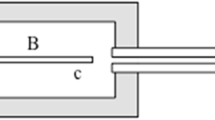Summary.
Ventricaria ventricosa and its relatives have intrigued cell biologists and electrophysiologists for over a hundred years. Historically, electrophysiologists have regarded V. ventricosa as a large single plant cell with unusual characteristics including a small and positive vacuole-to-outside membrane potential difference. However, V. ventricosa has a coenocytic construction, with an alveolate cytoplasm interpenetrated by a complex vacuole containing sulphated polysaccharides. We present a theory relating the coenocytic structure to the unusual electrophysiology of V. ventricosa. The alveolate cytoplasm of V. ventricosa consists of a collective of uninucleate cytoplasmic domains interconnected by fine cytoplasmic strands containing microtubules. The cytoplasm is capable of disassociating into single cytoplasmic domains or aggregations of domains that can regenerate new coenocytes. The cytoplasmic domains are enclosed by outer (apical) and inner (basolateral) faces of a communal membrane with polarised K+-transporting functions, stabilised by microtubules and resembling a tissue such as a polarised epithelium. There is evidence for membrane trafficking through endocytosis and exocytosis and so “plasmalemma” and “tonoplast” do not have fixed identities. Intra- and extracellular polysaccharide mucilage has effects on electrophysiology through reducing the activity of water and through ion exchange. The vacuole-to-outside potential difference, at which the cell membrane conductance is maximal, reverses its sign from positive under hypertonic conditions to negative under hypotonic conditions. The marked mirror symmetry of the characteristics of current as a function of voltage and conductance as a function of voltage is interpreted as a feature of the communal membrane with polarised K+ transport. The complex inhomogeneous structure of the cytoplasm places in doubt previous measurements of cytoplasm-to-outside potential difference.
Similar content being viewed by others
Author information
Authors and Affiliations
Additional information
Correspondence and reprints: UNESCO Centre for Membrane Science and Technology, Department of Biophysics, School of Physics, University of New South Wales, Sydney, NSW 2052, Australia.
Rights and permissions
About this article
Cite this article
Shepherd, V., Beilby, M. & Bisson, M. When is a cell not a cell? A theory relating coenocytic structure to the unusual electrophysiology of Ventricaria ventricosa (Valonia ventricosa). Protoplasma 223, 79–91 (2004). https://doi.org/10.1007/s00709-003-0032-4
Received:
Accepted:
Published:
Issue Date:
DOI: https://doi.org/10.1007/s00709-003-0032-4



